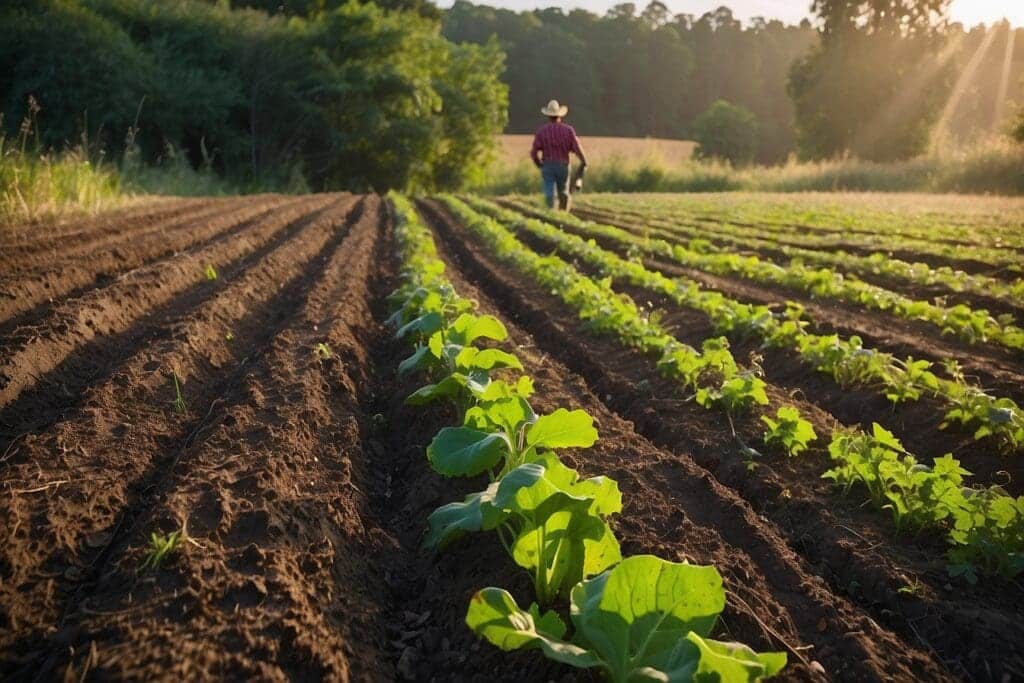
Getting started or scaling up regenerative agriculture practices requires more than just passion – it needs resources.
The good news? More support than ever exists! Here’s a breakdown of key resources to help farmers and ranchers build healthier soil, ecosystems, and businesses:
Government Grants & Funding Programs
The government offers significant backing. At the federal level, the USDA’s Natural Resources Conservation Service (NRCS) is crucial.
Programs like the Environmental Quality Incentives Program (EQIP) and the Conservation Stewardship Program (CSP) provide substantial financial help for practices like cover cropping, rotational grazing, and compost application.
Billions are allocated: The Inflation Reduction Act alone directed nearly $20 billion specifically towards climate-smart agriculture, much of it flowing through NRCS.
Many states also offer complementary grants. Plus, explore tax breaks and subsidies designed to reward sustainable land management.
Non-Profit & NGO Support
Organizations dedicated to environmental health and farming are powerful allies. Groups like the National Young Farmers Coalition, Rodale Institute, and The Savory Institute offer grants specifically for regenerative transitions.
Beyond money, they provide vital training programs and technical assistance – experts who help you plan and implement practices.
Crucially, NGOs also tackle land access challenges, connecting new farmers with affordable opportunities through trusts and innovative programs.
Private Sector & Corporate Funding
Big business is increasingly investing in regenerative supply chains. Companies like Patagonia and General Mills offer direct grants to farmers.
There’s also growing venture capital and impact investment flowing into regenerative ag startups and farms.
Furthermore, carbon credit programs and payments for ecosystem services are emerging markets, allowing farmers to earn income for the environmental benefits they create. While carbon credit prices vary, they represent a new revenue stream.
Crowdfunding & Community-Based Financing
Don’t underestimate community power! Platforms like Kickstarter and GoFundMe successfully fund specific farm projects.
Local investment clubs and farm cooperatives pool resources to support members. Community-Supported Agriculture models provide upfront operating capital from members who pay for seasonal produce shares in advance – a direct and reliable funding source.
Equipment & Material Resources
Transitioning often needs new tools. Look for discounts or grants specifically for essential regenerative equipment like no-till drills, compost spreaders – sometimes offered through NRCS or NGOs.
Seed and input sharing networks within farming communities reduce costs. Partnerships are growing with ag-tech companies offering more affordable monitoring tools, soil testing, or biological inputs.
Educational & Research Funding
Knowledge is key. University-led research grants (often funded by government or NGOs) continuously advance regenerative techniques.
Scholarships frequently exist to help farmers attend crucial workshops or certification programs. Abundant free online resources are available from leaders like the Rodale Institute, providing accessible learning without high costs.
Loan Programs & Credit Options
Specific financing helps overcome upfront costs. The Farm Credit System offers low-interest loans tailored for sustainable agriculture projects.
The USDA FSA also provides microloans (up to $50,000) perfect for smaller-scale regenerative operations or beginning farmers. Additionally, some credit unions specialize in financing eco-friendly agriculture.
In-Kind Support & Barter Systems
Direct cash isn’t the only resource. Equipment rental or sharing networks (formal or informal) reduce the burden of owning expensive machinery.
Labor exchanges and volunteer programs connect farms with willing helpers. Traditional bartering: trading your pasture-raised beef for neighbor’s hay or carpentry skills – remains a valuable way to access materials and services without money changing hands.
Conclusion
Regenerative agriculture is (building) gaining momentum, with growing financial and technical support available.
Farmers can tap into grants, loans, carbon markets, and community networks to fund sustainable practices. By leveraging these resources, they can build profitable, eco-friendly farms for the future.





